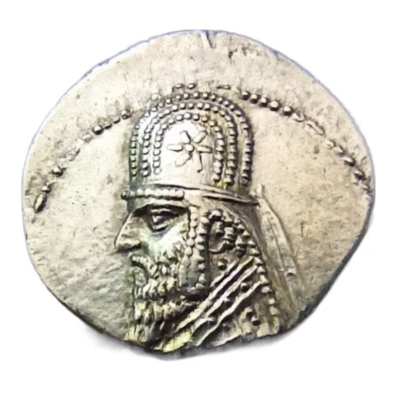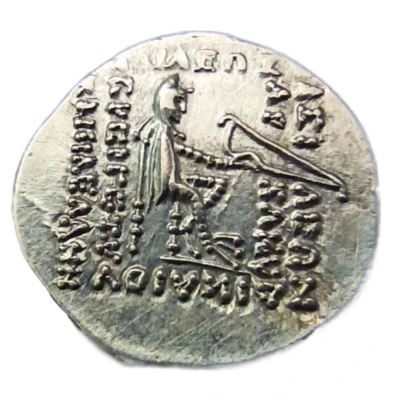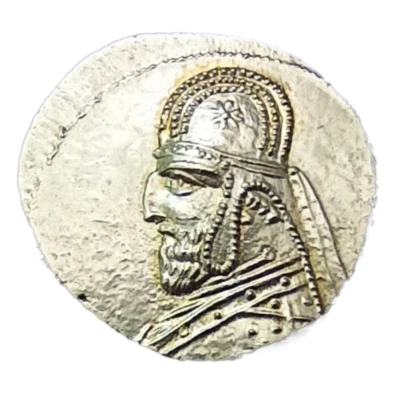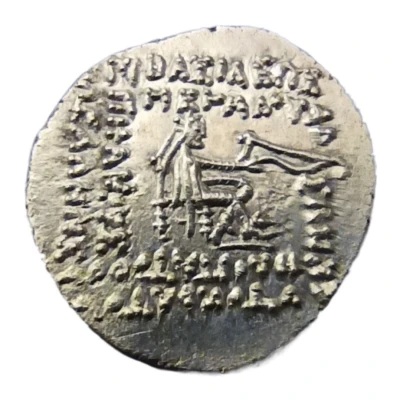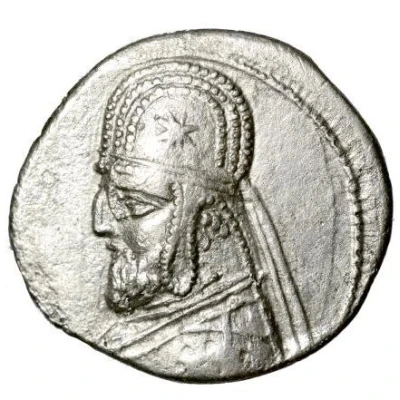
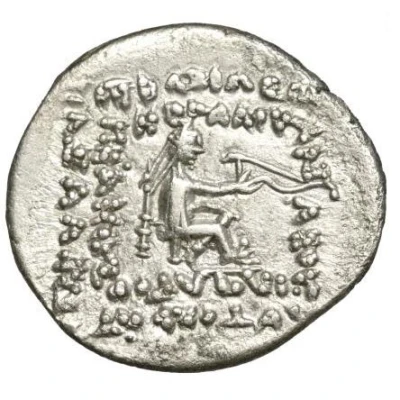

© Brünhild (CC0)
Drachm - Orodes I 90 BC - 80 BC
| Silver | 3.95 g | 19 mm |
| Issuer | Parthian Empire (Parthian Empire (247 BC - 224 AD)) |
|---|---|
| King | Orodes I (80 BC - 75 BC) |
| Type | Standard circulation coin |
| Years | 90 BC - 80 BC |
| Value | Drachm (1) |
| Currency | Drachm (247 BC-224 AD) |
| Composition | Silver |
| Weight | 3.95 g |
| Diameter | 19 mm |
| Shape | Round (irregular) |
| Technique | Hammered |
| Orientation | Medal alignment ↑↑ |
| Demonetized | Yes |
| Updated | 2024-10-10 |
| Numista | N#41941 |
|---|---|
| Rarity index | 85% |
Reverse
Beardless archer wearing bashlyk and cloak seated right on throne, holding bow in right hand; no border; seven-line Greek inscription.
Script: Greek
Lettering: ΒΑΣΙΛΕΟΣ ΜΕΓΑΛΟΥ ΑΡΣΑΚΟΥ ΑΥΤΟΚΡΑΤΟΡΟΣ ΦΙΛΟΠΑΤΟΡΟΣ ΕΠΙΦΑΝΟΥΣ ΦΙΛΕΛΛΗΝΟΣ
Translation: Of the Great King Arsakes, Ruling by his own authority, Loving his father, Illustrious, Loving the Greeks.
Edge
Plain
Comment
This coin was struck during the Parthian "Dark Age" and authors do not agree on the exact dates and rulers depicted on the coins of this period. For Type 31, several theories exist:Orodes I (Sellwood 1971); Sinatruces (A. Simonetta 1966; A. Simonetta/Sellwood 1978; Waggoner 1974); Gotarzes I (B. Simonetta 1974, 1975; Dobbins,
1975); Arsaces IX (Mørkholm 1980); Unknown king 87–82 BC (Dilmaghani 1986); Mithradates III (Assar 2006b).
The coin was originally attributed to Orodes I by Sellwood in 1966. In a later article with Simonetta, Sellwood attributed it to Sinatruces. The most recent publications suggest either Sinatruces (Alberto M. Simonetta - "The Coinage of the So-called Parthian Dark Age Revisited", Krakow, 2009) or Mithridates III (Gholamreza F. Assar - "A Revised Parthian Chronology of the Period 91-55 BC", Rome, 2006)
Interesting fact
One interesting fact about the Standard circulation coin Drachm - Orodes I (90 BC - 80 BC) from Parthian Empire (Parthian Empire (247 BC - 224 AD)) made of Silver weighing 3.95 g is that it features an image of the king, Orodes I, on one side and an image of the goddess Athena on the other. This coin was used as a means of currency and exchange during the Parthian Empire, which was a major power in the ancient Near East and beyond.
